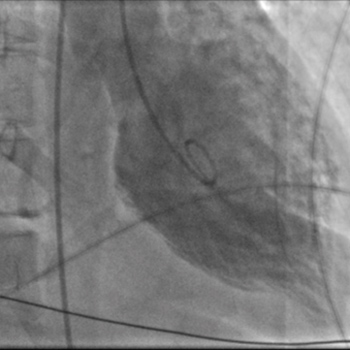Keywords
Inverse Takotsubo cardiomyopathy, vasopressin, myomectomy
Abstract
Vasopressin is involved in cardiovascular homeostasis that can influence coronary perfusion. It is commonly used as a local vasoconstricting agent during gynaecological procedures.
We present a case of cardiac arrest and inverse Takotsubo features following intramyometrial vasopressin administration during myomectomy. The patient was successfully resuscitated and recovered completely. Cardiac presentation was compatible with inverse Takotsubo cardiomyopathy that could have been triggered by high-dose vasopressin-induced coronary vasoconstriction. The patient’s cardiac function resolved with no long-term sequelae.
Takotsubo cardiomyopathy usually results from an excessive catecholaminergic surge. High-dose vasopressin-induced coronary vasospasm could have been the mechanism underlying the clinical presentation in our patient.
References

Views: 680
HTML downloads: 87
PDF downloads: 335
Published:
2021-05-21
Issue:
2021: Vol 8 No 5
(view)










